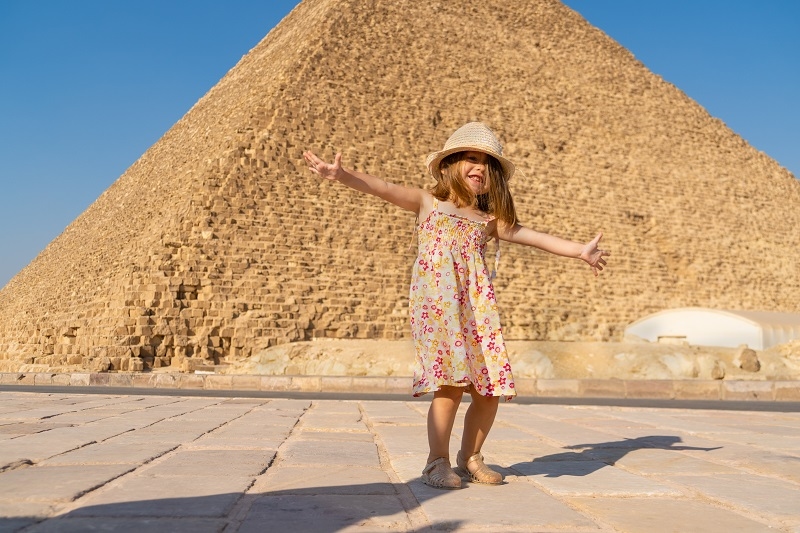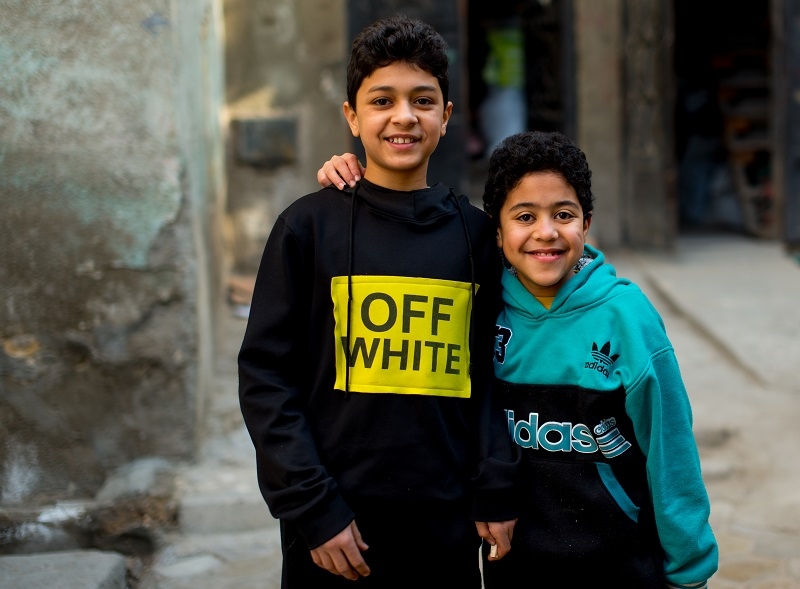
Egyptian culture has left an indelible mark on various aspects of modern society, from architecture and fashion to beauty trends and hairstyles. Among these, Egyptian culture and kids’ hairstyles have particularly been influenced by ancient Egyptian styling techniques, reflecting a blend of tradition and contemporary trends. This article explores the influence of Egyptian culture on modern kids’ hairstyles, with a special focus on traditional braids, cultural heritage, and ancient styling techniques.
Hairdos in ancient Egypt were not just about beauty and aesthetics; they also served as an important cultural, social, and religious function. In ancient Egypt, children shaved their heads with the exception for a "side-lock of youth." This long, plaited lock of hair indicated childhood. This side-lock was said to protect the child and was closely associated with god Horus. Many traditional hairstyles have transcended the millennium, influencing modern hairstyles for children in various ways.
Hairstyles in ancient Egypt felt a strong influence from social status and roles. If the hairstyles of commoners were simple, the hairstyles of higher-ranked persons were all arranged with sophisticated hair adornments, braid effects, and gold trimmings. Wigs and natural oils paired with hair adornments were a common practice for both children and adults alike, ensuring that hair remained healthy even in the harsh climate of Egypt.
Braiding, for ages, has been an essential part of Egyptian culture. Girls would have their hair in elaborate braids adorned with beads, gold, and jewelry. Such traditional braiding has transformed into modern hair trends seen today, especially with girls with naturally curly or textured hair.
Traditional Egyptian braids have found their way into modern hairstyling in the form of:
These hairstyles represent more than just fashion; they also celebrate heritage by preserving traditional techniques in contemporary use. Besides this, braiding methods help protect the hair from damage and cut down the frequency of styling, making them all the more practical for children.
If Egyptian culture still informs the emotions that parents imbue into the decisions behind how they style their children’s hair in some communities that honor ancestral roots, then it becomes something much deeper than just a beauty statement. In fact, hairstyles help express identity and pride in one's culture.
Many parents today still braid their children's hair as a means of honoring their ancestors' styles while protecting their children’s hair. Put simply, schools, social gatherings, and cultural celebrations are often great venues for showcasing these hairstyles and, in that sense, cultivating respect for Egyptian heritage. The interest in Afrocentric and Egyptian-inspired hairstyles is increasing, thus creating a movement where children are taught about their heritage through hair practices.
Beyond hairdressing, these hairstyles act as links to history and the story. In the ancient days, hairdos went hand in hand with certain deities, some of whom were honored in the belief that a particular style accorded spiritual protection. The perpetuation of such traditions by parents and stylists serves to uphold the cultural narratives of the land that have been handed down from father to son for ages.

In hair care, the ancient Egyptians used various natural oils and herbal remedies. Some of the notable ancient styling techniques that have influenced modern hair trends include:
In such areas, Egyptian cultural influence has carried itself into global fashion beyond one hairstyle. Starting from runways to movies, kids' brands, all depict Egyptian motifs, hairdos, and accessories in their drafts. These most often feature celebrity children and influencers showcasing Egyptian hair styles, which boost their sellability into younger minds.
This blending in commercial fashion proves how enduringly Egyptian culture persists today in defining beauty. With an increase in representation onto the screen, history-meaningful hairstyles are increasingly embraced by children, thus contributing to the cause of diversifying and appreciating culture. Many more Egyptian-inspired hairstyles can now be found as part of exposure in popular media like cartoons and television programs.
Global campaigns advocating using natural hair have also prompted children into sporting these traditional styles with pride. It is further through mainstreaming such hairstyles into fashion that an increasing hearing of use in our society becomes evident.
This already creates a thin line between appreciation and appropriation as Egyptian hairdos are quickly emerging into popular culture. Thus, parents and stylists should advocate parents to educate children with the historical significance of these styles, as well as encourage the appropriate and knowledgeable use of the same.
Some of the things that you could do to encourage cultural appreciation include:
Knowing the origin of these hairstyles will give children a sense of pride and respect towards cultural diversity. This will further ensure that, with historical awareness, the styles will be worn in authenticity and appreciation, rather than as simple fashion trends.
The influence of Egyptian culture on modern kids’ hairstyles is evident in the continued popularity of braiding techniques, hair accessories, and ancient hair care practices. These styles not only serve as a tribute to a rich historical past but also provide practical benefits for maintaining healthy hair. As parents and children continue to embrace these influences, it is essential to recognize their origins and celebrate the cultural heritage they represent. By doing so, we ensure that the legacy of Egyptian hairstyling remains alive for future generations, blending the beauty of tradition with contemporary trends.
Ultimately, Egyptian culture and kids’ hairstyles serve as a bridge between the past and the present, preserving traditions while evolving with modern tastes. Through education, representation, and cultural appreciation, the impact of Egyptian culture on kids’ hairstyles will continue to thrive, fostering a sense of identity and pride for years to come.
This content was created by AI